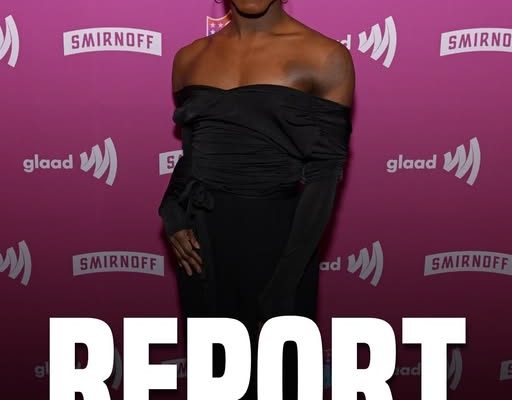Justine Lindsay is back, and her return to the Carolina Panthers’ TopCats cheerleading squad this season is more than just a continuation of her role—it’s a testament to perseverance, visibility, and the ongoing evolution of professional sports culture. Lindsay made history in March 2022 when she became the first openly transgender cheerleader in the NFL, breaking barriers in a league long associated with traditional norms. Her journey reflects both personal courage and the wider societal shifts that have begun to embrace greater inclusivity in spaces that were once rigidly defined.
Lindsay’s path to the NFL spotlight was far from straightforward. From a young age, she was drawn to dance and performance, participating in school programs, community events, and local dance competitions. She cultivated a love for choreography and the athletic rigor of cheerleading, mastering the balance of physical precision and expressive artistry that defines professional cheer squads. Her early years were also a period of self-discovery. As Lindsay grew older, she recognized her identity as transgender, a realization that would eventually shape her life in profound ways.
The decision to audition for the Panthers’ TopCats in 2022 was a milestone moment. Auditions for NFL cheerleading squads are notoriously competitive, demanding peak physical fitness, endurance, versatility in dance styles, and the ability to perform under high-pressure conditions. Lindsay prepared tirelessly, honing routines, perfecting stunts, and refining her technique. But beyond the physical preparation, she also faced a psychological and emotional challenge: stepping into a public role as an openly transgender individual in a world where visibility could invite both support and scrutiny. Her courage was immediately recognized, not just for her talent but for the barrier-breaking nature of her presence.
Her acceptance to the TopCats squad was more than a personal triumph; it was a cultural moment. The NFL, while evolving, has historically been slow to embrace LGBTQ+ representation in visible roles. While players and executives have gradually become more open, cheerleading—often criticized for its rigid beauty and gender norms—remained a space where inclusivity had yet to be fully realized. Lindsay’s presence challenged traditional assumptions and demonstrated that talent, dedication, and performance excellence transcend gender identity. Media outlets quickly picked up the story, highlighting her historic achievement and the broader implications for sports inclusivity.
Lindsay’s debut season in 2022 brought both challenges and successes. On the field, she had to navigate the rigorous demands of NFL-level cheerleading: long hours of practice, high-energy performances during games, and the physical toll of complex routines. Off the field, she faced the public spotlight, including social media commentary and interviews that focused as much on her identity as on her skills. Lindsay handled these pressures with remarkable poise, often emphasizing in interviews that her priority was always the performance and the team, while also recognizing the importance of representation for others who may feel marginalized or unseen. Her presence provided visibility for transgender athletes and performers, showing young people across the country that pursuing a dream in sports or performance should not be limited by gender identity.
The Panthers organization embraced Lindsay’s historic role. They highlighted her inclusion as part of their commitment to diversity and equity, supporting her as a key member of the TopCats squad. This support went beyond simple recognition—it involved ensuring that Lindsay had access to the resources, coaching, and team camaraderie necessary to thrive. The squad itself responded positively, with teammates embracing her as an integral part of their performance unit. The collaboration and unity displayed on and off the field sent a strong message to fans and the broader sports community: professional excellence and diversity are not mutually exclusive.
The impact of Lindsay’s historic presence extends beyond the NFL. Her story has become a touchstone in conversations about gender inclusivity in sports, performance arts, and workplaces across the country. By occupying a highly visible role in one of the nation’s most popular sports leagues, she challenges stereotypes and encourages institutions to re-evaluate policies, practices, and perceptions. Schools, dance academies, and community organizations cite her example when promoting inclusive programming and encouraging participation from all students, regardless of gender identity. Her influence illustrates the ripple effect that one individual’s courage can have in shifting cultural norms.
Returning for the 2025 season, Lindsay carries with her the weight of this legacy, but also a sense of excitement and renewed purpose. She has grown into her role, refining her performance skills and deepening her connection with the Panthers’ fanbase. This season, she is expected to bring new routines, showcase enhanced technical abilities, and participate in community engagement initiatives that further amplify her visibility and advocacy. Lindsay herself has spoken about how she hopes to inspire others, emphasizing that the journey is ongoing and that representation is most powerful when it opens doors for others to follow.
Beyond her work with the TopCats, Lindsay has become a public advocate for LGBTQ+ rights and inclusion in sports. She participates in panels, speaks at schools and community centers, and collaborates with organizations that focus on supporting transgender youth. These efforts highlight the dual role that trailblazers often inhabit: excelling in their professional craft while simultaneously serving as symbols of possibility and progress. Lindsay has embraced this dual role with grace, using her platform to create tangible opportunities for education, awareness, and empowerment.
Fans have responded enthusiastically to her return. Social media posts, fan forums, and game-day cheers reflect widespread admiration for Lindsay not only as a performer but also as a figure of courage and authenticity. Her journey resonates particularly with young fans navigating their own identities, who see in her a reflection of their aspirations and the message that their dreams are valid. The support she receives underscores a broader shift in sports culture, where inclusivity and diversity are increasingly recognized as strengths rather than exceptions.
The NFL itself has benefited from the positive attention generated by Lindsay’s historic presence. Her role in the TopCats contributes to the league’s ongoing efforts to demonstrate that football is more than just a game—it is a platform for social impact, community engagement, and cultural evolution. By embracing diverse talent and promoting visibility, the league strengthens its connection with a wider audience and fosters a sense of belonging for fans who might previously have felt excluded from traditional narratives.
Lindsay’s story also sheds light on the intersection of identity, performance, and professionalism. Being an NFL cheerleader demands discipline, resilience, and adaptability. For Lindsay, it also involves navigating complex social dynamics and public perceptions. Her success illustrates that inclusivity is not simply about representation for its own sake; it is about recognizing talent, dedication, and excellence wherever they appear. Her journey affirms that diversity enriches the professional environment, enhancing creativity, team cohesion, and community engagement.
As the 2025 season unfolds, Lindsay’s presence on the field serves as a reminder that progress in sports and society is often incremental but deeply meaningful. Each routine, each performance, and each fan interaction represents a step toward normalizing inclusivity and breaking down outdated barriers. Lindsay continues to inspire not only aspiring cheerleaders but anyone striving to live authentically while pursuing their passions. Her journey demonstrates that visibility, courage, and talent can coexist powerfully, creating opportunities that were once unimaginable.
In conclusion, Justine Lindsay’s return to the Carolina Panthers’ TopCats cheerleading squad is more than a personal achievement; it is a milestone in the ongoing evolution of professional sports culture. Her journey from aspiring dancer to NFL trailblazer illustrates the power of perseverance, the importance of representation, and the transformative impact of inclusivity. By excelling in her craft while boldly embracing her identity, Lindsay sets an example for athletes, performers, and individuals everywhere. Her story is a beacon for the future, demonstrating that barriers can be broken, norms can be challenged, and excellence can be achieved without compromise. As the season progresses, fans, teammates, and the broader sports community will watch, cheer, and be inspired by a figure who is as groundbreaking off the field as she is on it. Justine Lindsay is not only returning—she is reaffirming her place in history, continuing to shape the conversation about inclusivity in sports, and proving that authenticity and talent are a winning combination.



